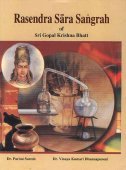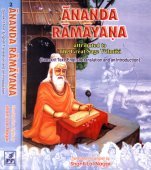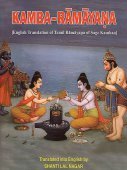Vedic age, Vedic era: 1 definition
Introduction:
Vedic age means something in Hinduism, Sanskrit. If you want to know the exact meaning, history, etymology or English translation of this term then check out the descriptions on this page. Add your comment or reference to a book if you want to contribute to this summary article.
In Hinduism
Vastushastra (architecture)
Source: Shodhganga: Elements of Art and Architecture in the Trtiyakhanda of the Visnudharmottarapurana (vastu)In the Vedic Age, people practised to connect themselves with gods through the yajñas (“sacrificial rites”) by chanting the Vedic mantras or practicing penance. In the Vedic era, Agni is considered as the mediator between the deities and the devotees or sages. In the Viṣṇudharmottarapurāṇa it is clearly stated that the requirement of making of temple is most important in the Kaliyuga. Because, in the three other yugas i.e.,, Kṛta, Tretā and Dvāpara; people could realize the existence of Gods and had tried directly to connect themselves with the supreme spirit. But in the Kaliyuga it is totally impossible due to the growth of unlawful activities in the society.

Vastushastra (वास्तुशास्त्र, vāstuśāstra) refers to the ancient Indian science (shastra) of architecture (vastu), dealing with topics such architecture, sculpture, town-building, fort building and various other constructions. Vastu also deals with the philosophy of the architectural relation with the cosmic universe.
See also (Relevant definitions)
Partial matches: Age, Aage, Era, Ake, Veda.
Query error!
Full-text (+26): Fire-worship, Vaidika-yuga, Vaidic-yug, Mediator, Samvid, Earth, Vedi, Sacrificial ground, Idol worship, Vedic Mantra, Realising, Sacrificial rite, Connecting, Unlawful activity, Vaikhanasas, Agni, Avayava, Matra, Parivarta, Padabhaga.
Relevant text
Search found 106 books and stories containing Vedic age, Vedic ages, Vedic era; (plurals include: Vedic ages, Vedic ageses, Vedic eras). You can also click to the full overview containing English textual excerpts. Below are direct links for the most relevant articles:
Vishnudharmottara Purana (Art and Architecture) (by Bhagyashree Sarma)
2. Necessity of Temple Building < [Chapter 4 - Temple Building]
1. Origin and Development of Temple building < [Chapter 4 - Temple Building]
Impact of Vedic Culture on Society (by Kaushik Acharya)
Changes in Administration and Polity in Later Vedic Era < [Chapter 5]
Systems of Administration Prevalent In the Vedic Period < [Chapter 5]
4. Religious Aspect of Dāna < [Chapter 2]
International Ayurvedic Medical Journal
Pre and post vedic plants used in diabetes- a data base study < [2014, Issue III May-June]
Selection, induction and education of scholars in ayurvedic stream during ancient era < [2021, Issue 12, December]
Multidimensional approach of rasayana in occupational health < [2022, Issue 2, February]
Vyavaharamala: a text on Indian jurisprudence (by P. V. Rajee)
7. Veda, Smriti, Purana, Nibandha are the source of ancient law < [Chapter 1 - Introduction]
The Sacrifices of Rajasuya, Vajapeya and Ashvamedha (study) (by Aparna Dhar)
Summary of the Agnihotra Sacrifice < [Chapter 2 - Vedic Sacrifices described in the Śatapatha Brāhmaṇa]
Summary of the Rājasūya sacrifice < [Chapter 2 - Vedic Sacrifices described in the Śatapatha Brāhmaṇa]
Use of Replica < [Chapter 2 - Vedic Sacrifices described in the Śatapatha Brāhmaṇa]
World Journal of Pharmaceutical Research
Kamal (nelumbo nucifera gaertn.) – a literary review from vedic era and samhita < [2022: Volume 11, February issue 2]
Agnikarma with suryakanta for common warts in charmakeela. < [2023: Volume 12, October issue 17]
Kamal (nelumbo nucifera gaertn.) – a literary review from nighantu era < [2022: Volume 11, March issue 3]
Related products


